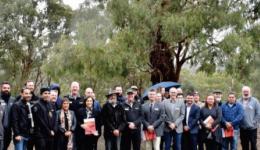Lead end user
What if an earthquake hit central Adelaide? A major flood on the Yarra River through Melbourne? A bushfire on the slopes of Mount Wellington over Hobart?
‘What if?’ scenario modelling through this project is helping government, planning authorities and emergency service agencies think through the costs and consequences of various options on preparing for major disasters on their infrastructure and natural environments and how these might change into the future.
The research is based on the premise that to reduce both the risk and cost of natural disasters, an integrated approach is needed to consider multiple hazards and a range of mitigation options.
Resources credited
| Type | Released | Title | Download | Key Topics |
|---|---|---|---|---|
| Presentation-Slideshow | 07 Jul 2017 | Understanding the value and challenges of risk mitigation |
|
economics, mitigation, resilience |




